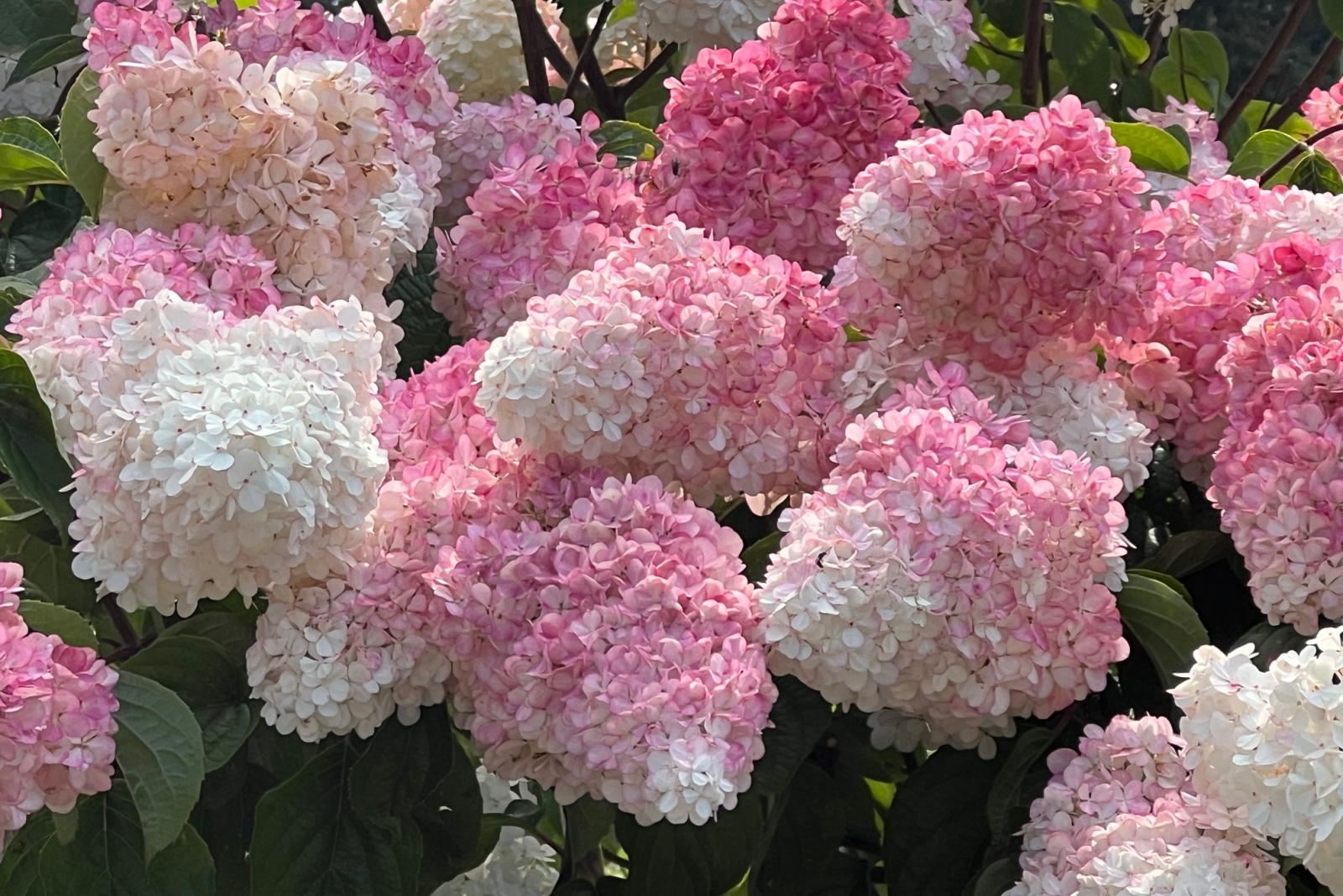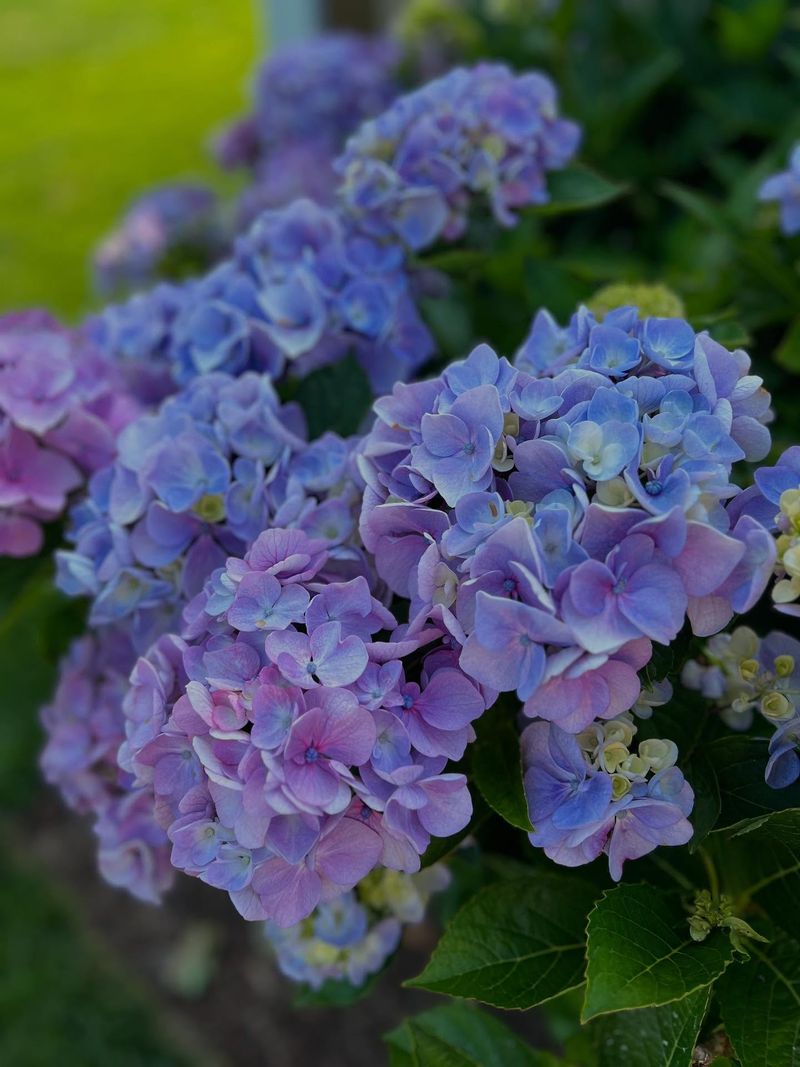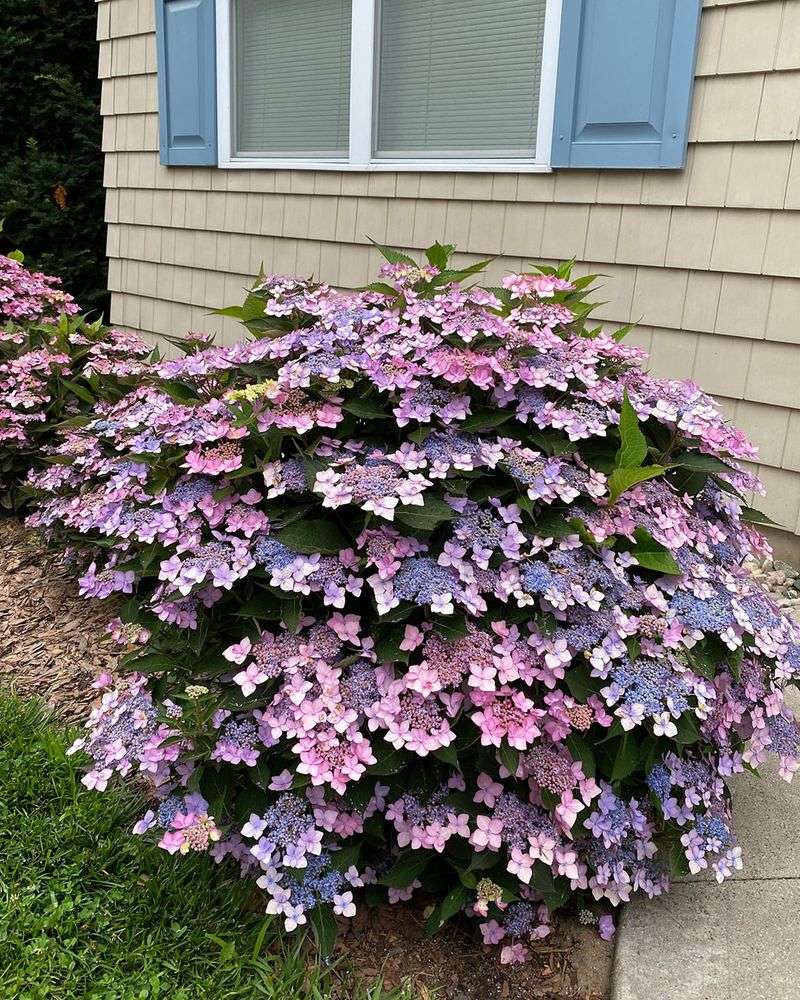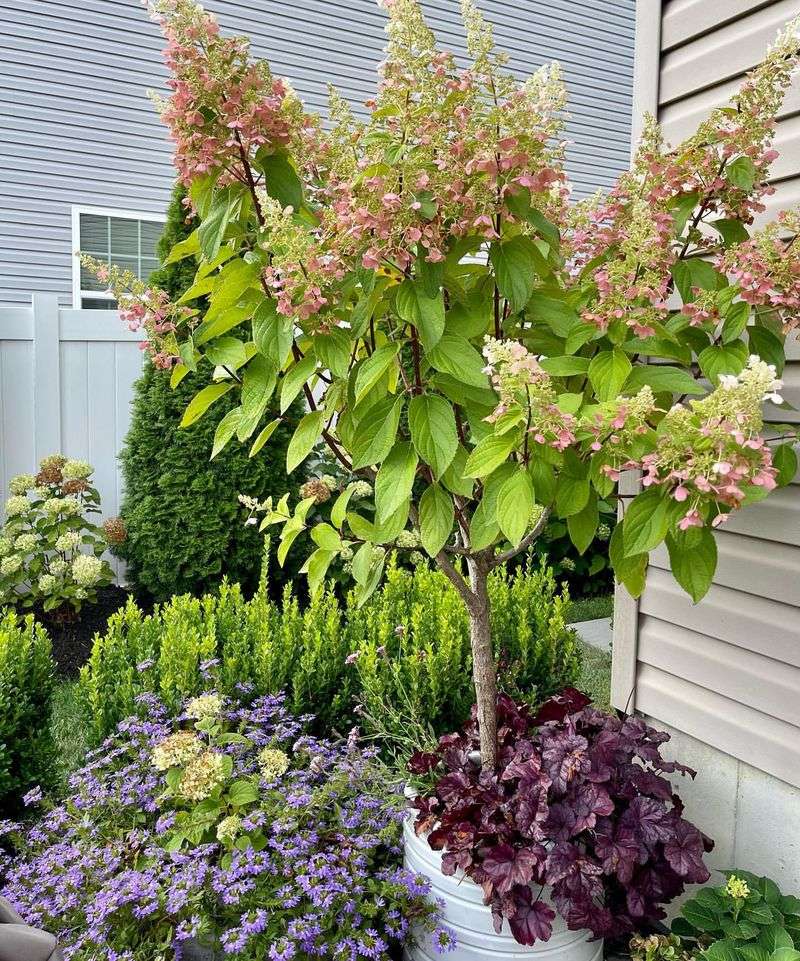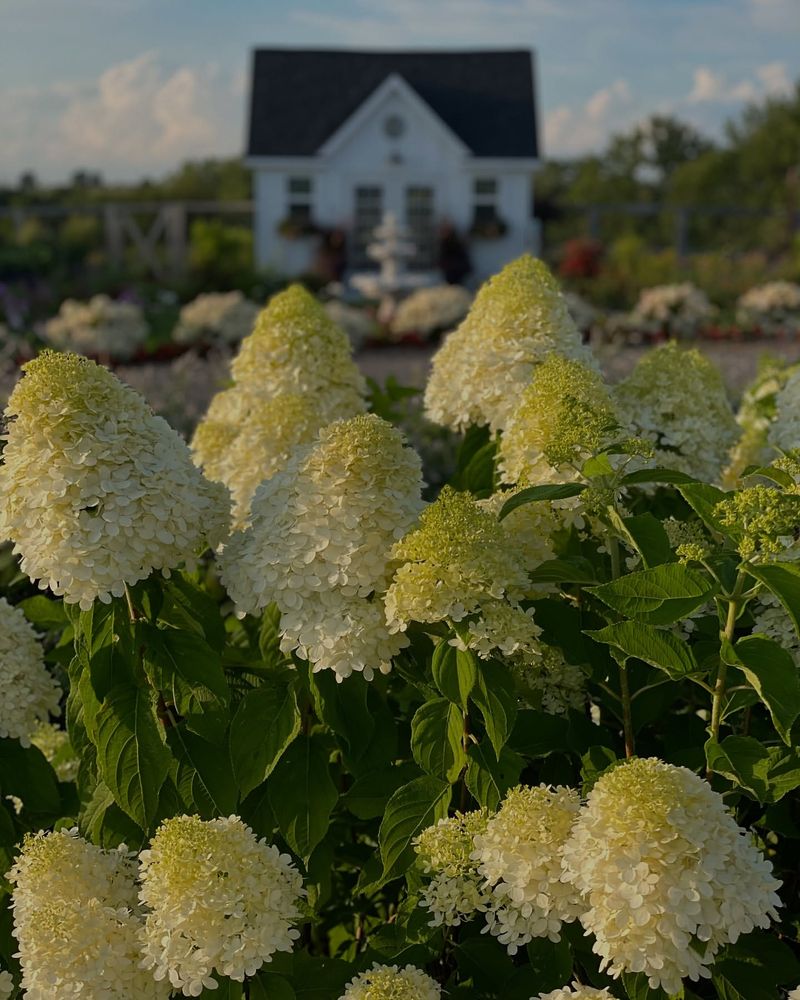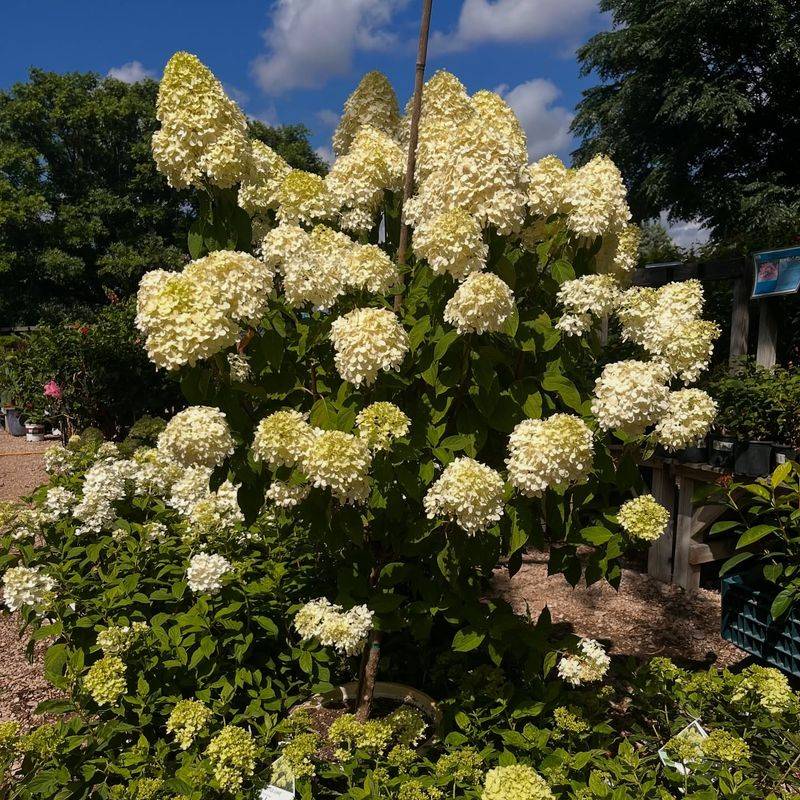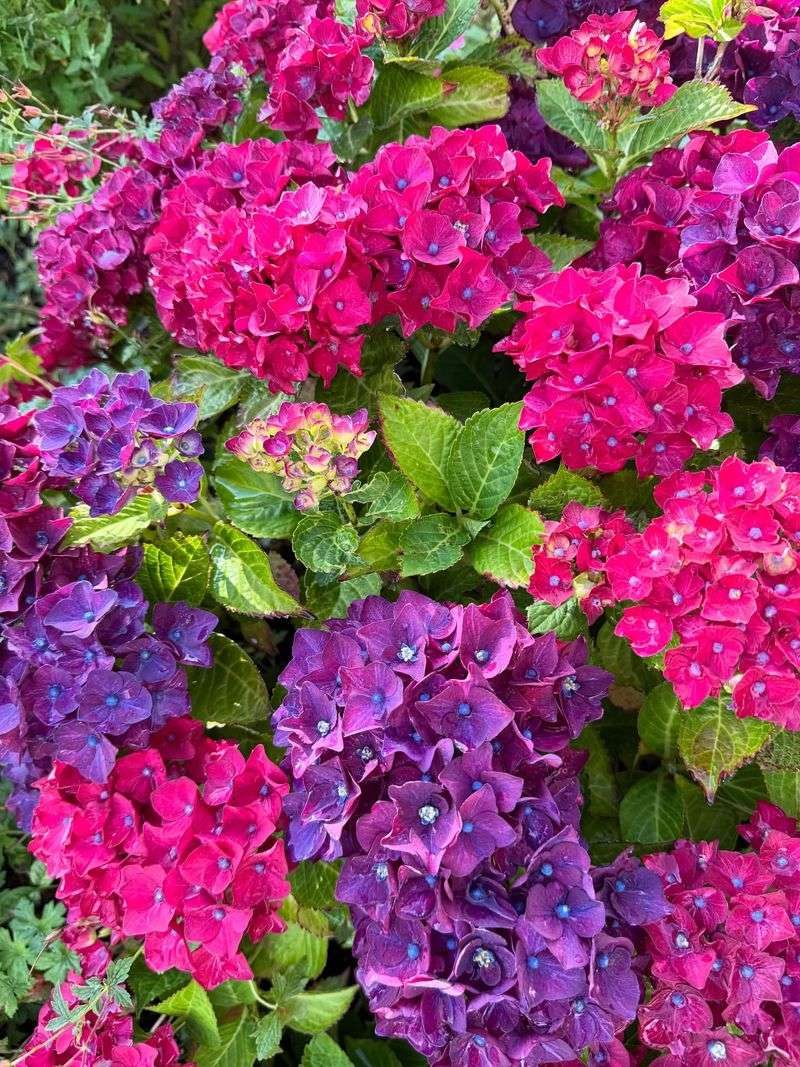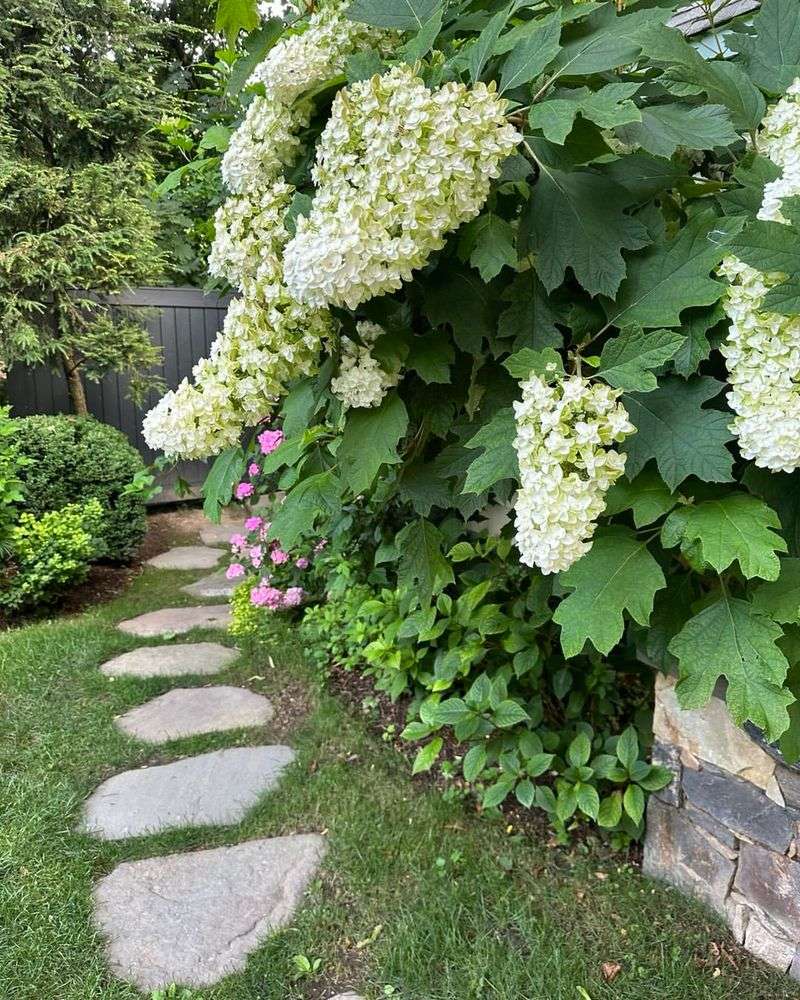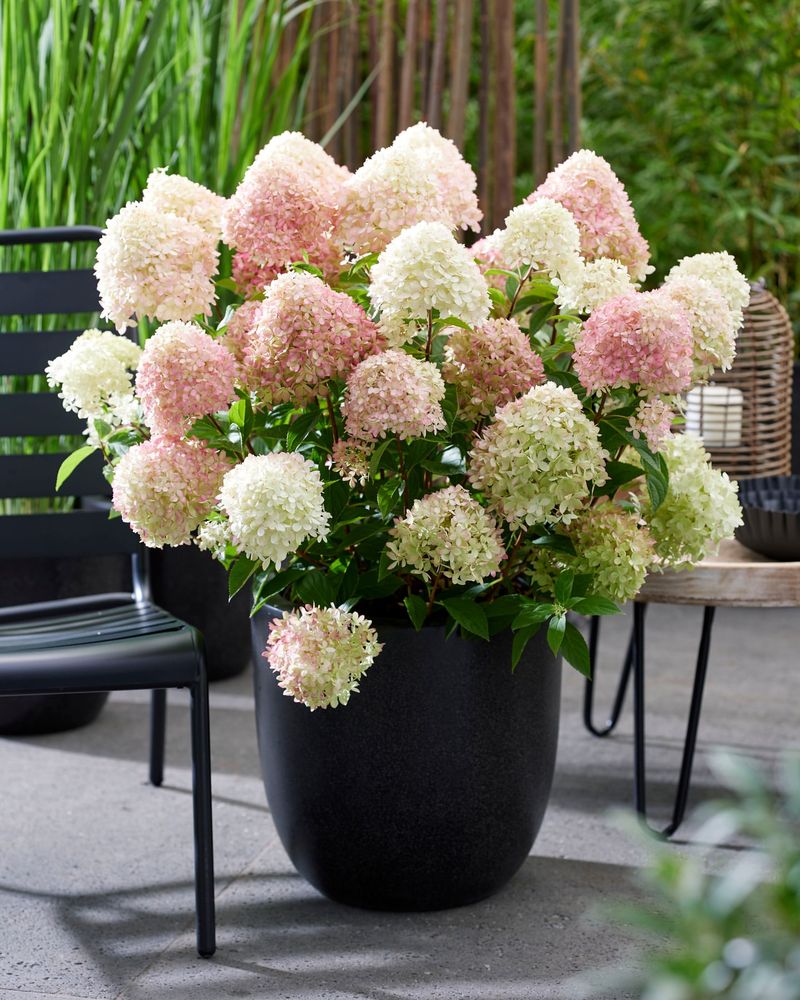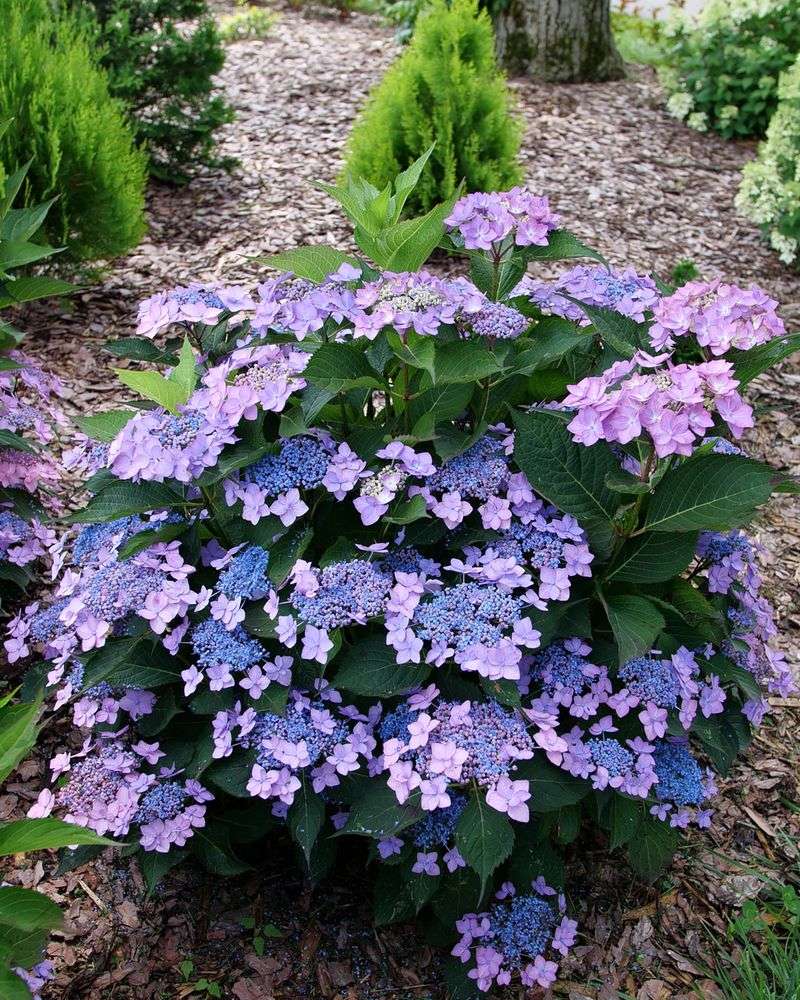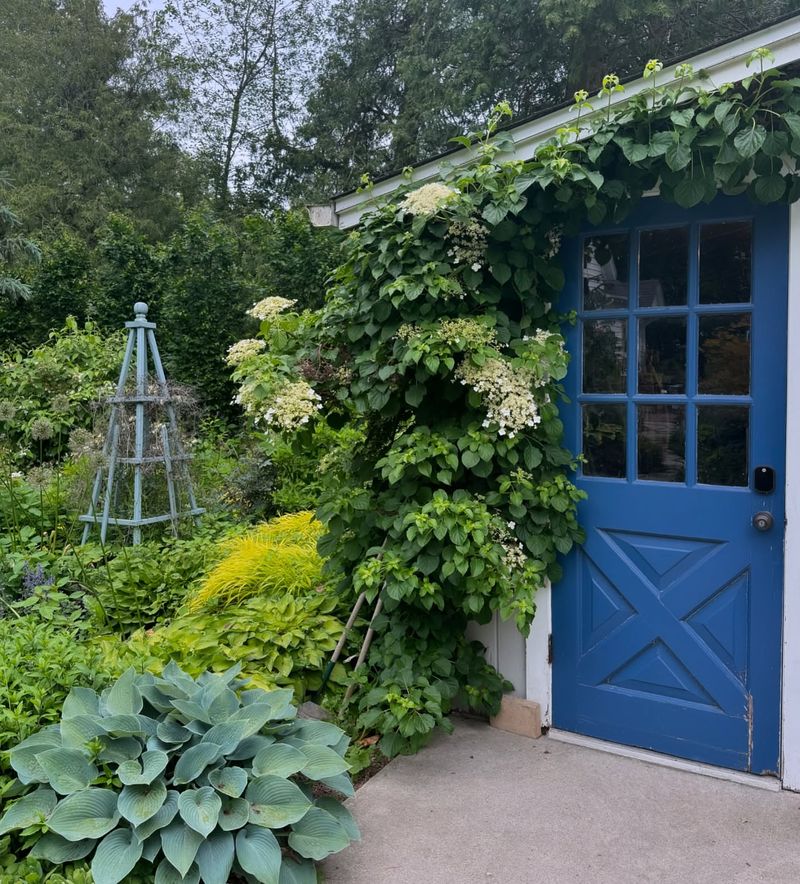Hydrangeas bring spectacular beauty to Massachusetts gardens with their showy blooms and versatile growing habits. These flowering shrubs thrive in our state’s climate and soil conditions, making them popular choices for both novice and experienced gardeners.
Discover how to make the most of these stunning plants with these essential facts tailored specifically for Massachusetts growing conditions.
1. Massachusetts Soil Affects Bloom Color
Our state’s naturally acidic soil is why blue hydrangeas are so common in Massachusetts gardens. The more acidic your soil (pH below 5.5), the bluer your blooms will be. If you’re seeing pink flowers instead, your soil might be more alkaline than typical.
You can adjust the color by adding aluminum sulfate to increase acidity for blue flowers, or garden lime to reduce acidity for pink blooms. Just remember that white hydrangeas won’t change color regardless of soil pH.
2. Winter Protection Is Essential
Massachusetts winters can be brutal on hydrangeas, especially newer varieties that bloom on old wood. Protecting your plants from harsh winter winds and freezing temperatures makes all the difference between glorious summer blooms and disappointment.
Create a protective cage around plants using chicken wire, then fill it with dry leaves in late fall after the ground freezes. For extra insurance, wrap the cage with burlap to block wind. Remove this protection gradually in spring as temperatures warm.
3. Native Hydrangea Species Thrive Here
Smooth hydrangea (Hydrangea arborescens) naturally grows in Massachusetts woodlands and makes an excellent garden choice. Unlike fussier imports, this native species handles our climate extremes with ease while supporting local pollinators and wildlife.
Look for popular cultivars like ‘Annabelle’ with its massive white flower heads. The best part? These natives bloom reliably even after harsh winters because they flower on new wood. Plant them in groups along woodland edges for a spectacular summer show.
4. Best Planting Time Isn’t When You Think
Fall planting gives hydrangeas a significant advantage in Massachusetts gardens. September and October offer ideal conditions – warm soil promotes root growth while cooler air reduces transplant stress.
Plants established in fall develop stronger root systems before summer heat arrives. This timing helps them survive their first Massachusetts summer with less watering. Avoid spring planting if possible, as newly planted hydrangeas often struggle during sudden summer heat waves before their roots are established.
5. Pruning Timing Makes or Breaks Blooms
Many Massachusetts gardeners accidentally remove flower buds by pruning at the wrong time. Hydrangeas that bloom on old wood (like bigleaf types) should only be pruned immediately after flowering ends in summer.
For varieties that bloom on new wood (like ‘Annabelle’ or panicle types), late winter or early spring pruning works best. Confused about your variety? The safe approach is to remove only dead wood in spring and save major pruning until after you see the flowers.
6. Panicle Hydrangeas Handle Full Sun
While many hydrangeas wilt in Massachusetts summer heat, panicle hydrangeas (Hydrangea paniculata) actually thrive in full sunshine. Their cone-shaped blooms start white in July, then gradually turn pink or red as fall approaches.
Hardy to zone 3, these tough plants survive our coldest winters without special protection. Popular varieties like ‘Limelight’ and ‘Little Lime’ make perfect specimens for sunny spots where other hydrangeas struggle. They’re also more drought-tolerant once established, requiring less summer watering.
7. Mulch Matters More Than You’d Guess
Massachusetts hydrangeas perform dramatically better with proper mulching. Apply a 3-inch layer of organic mulch like shredded leaves or pine needles around plants, keeping it a few inches away from stems.
This mulch layer moderates soil temperature extremes during our hot summers and cold winters. It also retains crucial moisture during dry spells and gradually improves soil quality as it breaks down. Replace or refresh your mulch annually in spring before summer heat arrives.
8. Oakleaf Varieties Offer Fall Color
Oakleaf hydrangeas bring multi-season interest to Massachusetts landscapes with their distinctive lobed leaves that resemble oak trees. Their summer white blooms gradually transform to pink and burgundy as fall approaches.
The real show begins in autumn when their foliage turns brilliant shades of burgundy, orange and purple. This native American species handles partial shade beautifully and tolerates drier conditions than most hydrangeas. Plant where you can enjoy their peeling cinnamon-colored bark during winter months.
9. Container Growing Requires Special Care
Growing hydrangeas in containers works beautifully for Massachusetts patios and small spaces, but requires winter protection. Choose compact varieties like ‘Endless Summer’ or ‘Cityline Paris’ for best results in pots.
During winter, move containers to an unheated garage or basement where temperatures stay between 25-40°F. If that’s not possible, cluster pots together against a protected wall and wrap with burlap and bubble wrap. Water occasionally during winter thaws to prevent root damage from drying out.
10. Reblooming Varieties Extend the Season
Massachusetts gardeners can enjoy hydrangea blooms from June through October by planting rebloomers like the ‘Endless Summer’ series. These special varieties flower on both old and new wood, providing a second flush of blooms even after a harsh winter kills old stems.
For maximum rebloom, fertilize lightly after the first flowering and deadhead spent blooms promptly. Keep soil consistently moist during summer months. Even if winter damages old growth, new stems will still produce flowers later in the season.
11. Climbing Hydrangeas Love Massachusetts Shade
Climbing hydrangeas (Hydrangea anomala petiolaris) transform shady Massachusetts walls and tree trunks into spectacular flowering features. Unlike most vines, they thrive in north and east-facing locations with minimal direct sun.
Be patient – they typically spend 2-3 years establishing before beginning their upward growth. Once established, they can reach 40+ feet high with proper support. Their lacy white summer flowers give way to attractive peeling bark that provides winter interest. No trellis needed – they climb using aerial rootlets.

